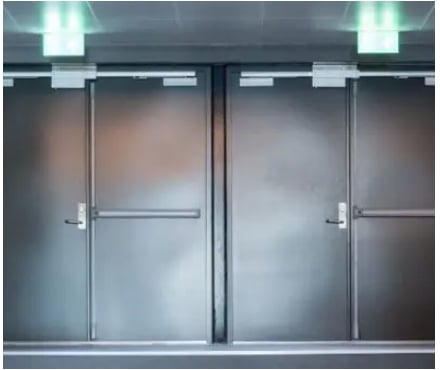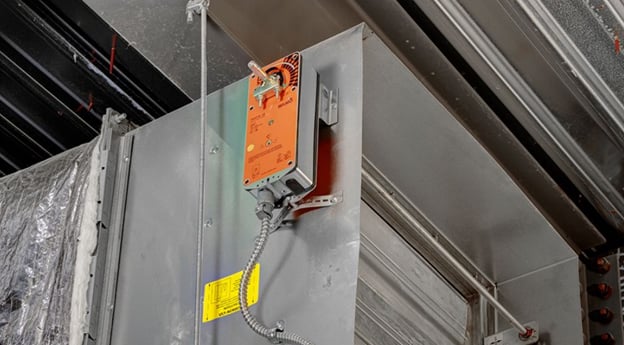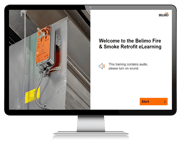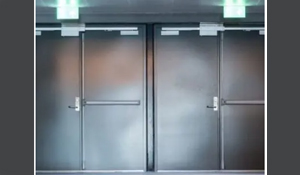Proactive Fire Safety Procedures
All fire safety procedures should be implemented and enforced to ensure that facilities are safe for occupants. However, the facility manager must take the necessary steps to implement them promptly. If inspections and repairs are delayed, it could be a tragic disaster.
Procedures vary from fire doors, fire and smoke dampers, above ceiling inspections, and fire stopping; they all have guidelines and requirements. The facility manager's responsibility is to orchestrate inspections and repairs to meet deadlines set by the authority holding jurisdiction. With all fire safety features, there are specific things to keep an eye out for and report when they are detected; anything out of the ordinary needs to be addressed immediately since we never know when a fire emergency will occur.
Fire Doors
As long as you know what to look for, you can detect fire door deficiencies through day-to-day operations at your facilities. Missing or painted over fire door labels are easily noticeable. Doors that don't latch properly or close fast enough behind someone or are propped open and do not shut properly need investigation. These situations can be easily avoided and reported to the facility manager for immediate repair to be fully compliant and functional in case of a fire.

The National Fire Protection Association (NFPA) requires that fire doors be inspected annually according to the guidelines below.
NFPA 80 – Fire Door Inspection Guidelines
-
-
Labels are visible and legible.
-
No open holes or breaks exist on either the door or frame surfaces.
-
Glazing, vision light frames, and glazing beads are intact and securely fastened in place, if so equipped.
-
The door, frame, hinges, hardware, and noncombustible threshold are secured, aligned, and functioning with no visible signs of damage.
-
No parts are missing or broken.
-
Door clearances do not exceed the stated values listed in 4.8.4 and 6.3.1.7.
-
The self-closing device is operational; the active door completely closes when operated from the fully open position.
-
If a coordinator is installed, the inactive leaf closes before the active leaf.
-
Latching hardware secures the door when it is in a closed position.
-
Auxiliary hardware items, which interfere or prohibit operation, are not installed on the door and frame.
-
No field modifications to the door assembly have been performed that void the label.
-
Meeting edge protection, gaskets, and edge seals, where required, are inspected to verify their presence and integrity.
-
Signage affixed to a door meets the requirements listed in 4.1.4.
-
Fire and Smoke Dampers
Fire and smoke dampers are not as easy to spot during day-to-day operations due to their location. Dampers are commonly found deficient during the inspection, so it's even more important to ensure deadlines are met for compliance and overall building safety. Dampers are complex and come in a variety of models. An industry professional is responsible for conducting inspections and repairs to confirm functionality.
According to NFPA 80 and NFPA 105 which are referenced by the International Fire Code, non-healthcare facilities need inspections every 4 years and hospitals every 6 years.
Fire Damper - NFPA 80 – Section 19.4 - Each damper shall be tested and inspected one year after installation. The test and inspection frequency shall then be every 4 years, except in hospitals, where the frequency shall be 6 years.
Smoke Damper - NFPA 105 – Section 6.5 - Each damper shall be tested and inspected one year after installation. The test and inspection frequency shall then be every 4 years, except in hospitals, where the frequency shall be 6 years.
Above Ceiling Inspections
Above the ceiling, inspections are often forgotten, but they are essential and should always be included in a facility's fire safety plan. Electrical wiring, junction boxes, and wall penetrations are the main items examined during this procedure. Facilities often undergo renovations and routine maintenance that can quickly shift things around above the ceiling, putting a facility at risk.
It is a good idea for facility managers to periodically check the areas where recent work has been done to ensure that everything has been appropriately repositioned. This proactive measure could prevent electrical fires from starting. The majority of above ceiling spaces are hard to reach and monitor, so calling industry professionals to perform an inspection is ideal. Above the ceiling, inspections are heavily enforced by the AHJ; it's crucial to meet all deadlines for facility compliance.
Firestopping
Firestopping restores the fire endurance rating to a barrier that includes a gap, hole, or opening. This opening threatens the integrity of the fire safety feature as it allows for fire and smoke to pass through. This process compartmentalizes areas to keep the fire and smoke in the place of origin, allowing occupants to evacuate safely. Check your fire barrier walls for gaps or holes that need to be filled while walking around your facility. Firestopping is critical to keeping the areas within your facility safe in the event of a fire.
The 2021 International Fire Code requires the routine maintenance of fire barrier walls. Walls should be properly repaired when damaged, altered, breached, or penetrated. Any penetrations found should be repaired with approved methods capable of resisting the passage of smoke and fire.
Replacement Fire and Smoke Damper Actuator Training

Learn the codes and standards that govern damper actuators, common types of dampers, replacement processes, and additional information on retrofit replacements. This free online training takes approximately 30 minutes to complete. There is a pre-quiz in the beginning, to prepare you for the final quiz at the end. The quiz is to illustrate to you what you have attained during the training.
This blog is based on an article provided by LSS Life Safety Services®

